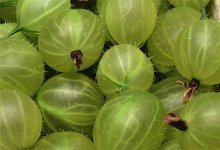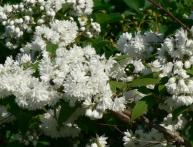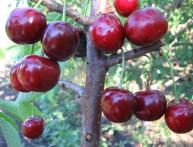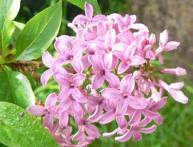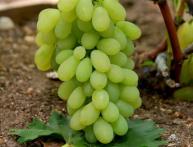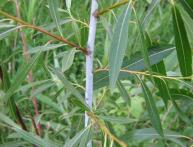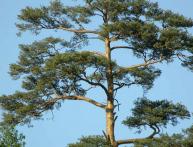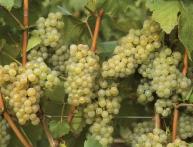Growing gooseberries: all the subtleties and features
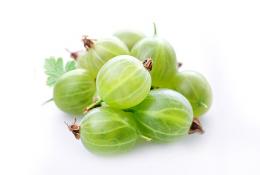
Growing gooseberries in Russia has been known since the 11th century. And the popularity of the shrub in Europe led to the creation of new varieties. An attempt to replace old Russian varieties with new, European ones led to the fact that at the beginning of the 20th century, along with new varieties, the spheroteca disease was introduced. Subsequent selection was aimed at developing varieties and hybrids resistant to it, as well as improving several other characteristics.
Content:
Which gooseberries to plant in the garden
Breeders in Russia and Europe have been working on the following qualities in recent years:
- taste of berries and their size
- breeding thornless or low-thorn varieties
- disease resistance
- frost resistance
- productivity
At the same time, attention was paid to ripening time, as a result of the work, many new varieties and hybrids have appeared, which also differ in harvesting times:
- early ripening, harvest before July 10
- average, berry picking until July 20
- late, berry picking after July 20
When choosing gooseberries for your garden, as a rule, they give preference to large-fruited, frost-resistant varieties with a high sugar content in the berries. In addition, many people pay attention to the color of the berries themselves, they are:
- white
- green
- red
- yellow
The five most common sweet varieties today include the following:
- Spring, one of the earliest berries in terms of ripening.Large-fruited gooseberry with berries weighing up to 8 g, green-yellow in color. Due to its high sugar content, it is an ideal option for making compotes and jam. The thorniness of the shoots is average, frost resistance is excellent. From one bush you can collect up to 4-5 kg of berries.
- White nights, early gooseberry, with berries weighing up to 7 g, thorns of medium length, located throughout the shoot, yield up to 6 kg per bush. Very resistant to typical gooseberry diseases.
- An elegant, mid-ripening variety with dark cherry-colored berries, weighing 5 g, yield 4 - 5 kg per bush, has thorns only at the bottom of each shoot.
- Tender - completely thornless variety, late ripening, green berries, average weight 4-5 grams, sweet. from one bush produces up to 6 kilograms of berries.
- Lada, a late-ripening variety, with red berries weighing up to 10 grams, a yield of up to 5 kg per bush, shoots with medium thorniness.
In recent years there have been many large-fruited varieties with berries weighing up to 18 grams: “Gigantic Lemon”, “Green Bottle”.
Experienced gardeners who already have several varieties strive for new products; for beginners, it is better to choose time-tested varieties. But in order for the gooseberry to show all the qualities intended by the breeders, it is important to plant it correctly.
Where to plant and in what soil?
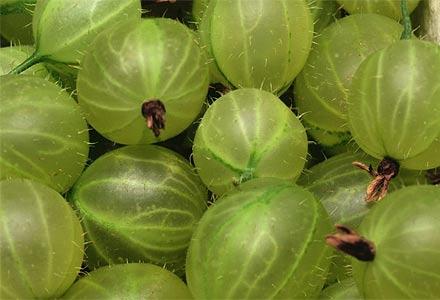
When choosing a site for gooseberries, it is important to consider that although this crop is frost-resistant, it is very susceptible to the effects of winter and summer winds. In this case, the berries are crushed, the bush develops slowly, and the death of the plant may occur.
Therefore, it is better to plant in an area protected from the wind, or to artificially create wind protection for the cold season.Tall garden plantings or buildings on the site can provide natural protection from the wind. If possible, plant this crop under the protection of a house wall or fence. In addition, in areas with snowy winters, a successful wintering of the crop is facilitated by early snow cover.
According to the terrain, it is better to give preference to a slight slope and avoid low, wet places. Sun illumination is good, at least 8 hours per summer day, but good development is possible in partial shade.
Gooseberries grow well in both chernozem and loamy soils; they also do well in acidic soils. Preparing the soil before planting is important.
Preparing the selected location
Since many varieties capable of producing crops for 10 - 20 years in one place without a decrease in yield, then it is necessary to take a responsible approach to soil preparation.
First of all, thoroughly clean the area of foreign roots and rhizomes. Remove weeds, especially wheatgrass. Although this is not an easy task. Over the course of the summer, you will have to dig up and select all its small and large rhizomes at least three times. In severe cases, twice a season, with an interval of 10 days, apply a herbicide against cereal weeds - sodium trichloroacetate. Consider that the last application should be three months before planting. Therefore, if we plant in the fall, at the end of September, then treatment with herbicides must be completed before the end of July.
Apply organic and mineral fertilizers per bush:
- nitrogen 300-400 g
- potassium 300 g
- phosphorus 400-500 g
- ash or limestone 300-400 g
- organic compost 10-15 kg
The mineral component can be added to the finished compost in advance; 15-16 kg of this mixture should be added per planting area of one bush, approximately 1.5 sq.m. After applying the fertilizer, the area is dug up, the digging depth is equal to the bayonet of a shovel.
Spring or autumn?
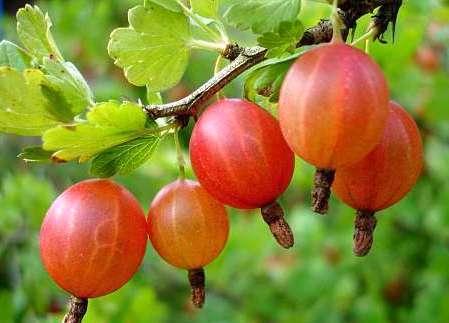
In areas where winters have little snow and strong winds, plant gooseberries better in spring. Where winters are snowy or milder, it is better to plant gooseberries in the fall. For autumn planting, around mid-September we prepare planting holes on pre-selected and prepared land.
When digging a hole, try to place the top fertile layer separately from the bottom. The average size of a hole for a one- to two-year-old seedling is 40 cm by 40 cm; if the bush is older, then you need to focus on the size of the root system and dig a hole measuring 60 cm by 60 cm.
The distance between the pits is 1.5 m. The planting pit should be ready two to three weeks before planting.
It is better to choose a seedling with well-developed root shoots; if they are too long and thin, they need to be cut off by about 1/3. Cut the root using clean garden pruning shears. You can install the seedling strictly vertically or with an inclination, almost “lying”, fill the hole with soil, observing the reverse order. Compact the soil around the seedling. Weak shoots are removed immediately, and healthy shoots are shortened after the leaves fall.
Spring planting is best done before the leaves appear. As a rule, this is done from mid-April to mid-May, if the seedling is sold in a container with a closed root system, it can be done later. After planting the seedling, water and mulch the soil around it well.
After this, dried and damaged parts of the shoots are removed with garden pruners.Cut healthy shoots by 1/3, leaving up to 5 well-formed buds on each.
When choosing planting material, pay attention to:
- condition of the root system, well-developed roots should be 15-20 cm long
- ground part, with a shoot height of 30 - 40 cm and a number of 3 to 5
- age, optimally 2 years, but up to 4 years is possible
In the first years, the gooseberry bush grows and forms quite slowly; stable fruiting begins in 3 - 5 years.
Seasonal care
With the coming of autumn the bush is prepared for wintering in the following way:
- in dry autumn, water the bush with a bucket of water in mid-September
- remove all fallen leaves and weed residues
- treat with fungicides
- by mid-October, finish pruning the bush, leaving up to 5-7 of the strongest shoots
- add soil and compost to the root zone
- During the winter, make sure that the gooseberries are sufficiently covered with snow.
In the spring, frozen parts are cut off, fertilizing and treatment against pests and diseases are carried out. It is not for nothing that gooseberries are considered the favorite crop of Russian gardeners; with proper care, they can withstand harsh winters and dry summers, delighting with a bountiful harvest.
Video instructions for properly growing gooseberries:
Interesting information about the vegetable garden

